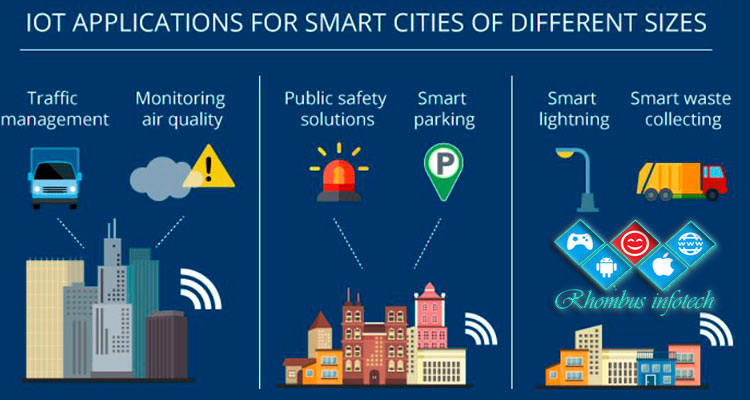Today technology has vastly improved our quality of life – from increased access to transportation to cheaper manufactured goods to reliable power and heat––but these luxuries have not come at a small cost. Air pollution has risen proportionally alongside these amenities. According to the World Health Organization, nine out of ten people breathe air that exceeds guideline limits of pollutants. These pollutants are estimated to kill seven million people worldwide every year and can be difficult to monitor or control. But IoT can help.
The biggest pollution sources are processes we rely on daily like fuel combustion in our vehicles, heat and power generation, industrial facilities, and waste sites. Living without any of these sounds like an impossible task and even if you drastically reduce contributors in your own area, under certain conditions, air pollution can travel over the state and even national borders, affecting populations well away from the source. That’s why tackling air pollution requires a high degree of visibility and collaboration across sectors and from the city-level to the national.
Previously, the only alternative was the manual collection of data. Cities would send teams or individuals armed with air monitoring equipment to take samples and measure air quality at various parts of the cities and repeat any time a new dataset was required. This process is extremely costly, time-consuming, and prone to human error. Even if it’s all done perfectly, it can still be challenging to get a clear idea of an entire city’s air quality.
Air pollution is a major factor in global heating and an increasing focus is centred on solving this problem. Urban communities take advantage of Information Technology (IT) and communications technologies in order to improve the control of environmental emissions and sound pollution. The aim is to mitigate health threatening risks and to raise awareness in relation to the effects of air pollution exposure. It investigates the key issues of a real-time pollution monitoring system, including the sensors, Internet of Things (IoT) communication protocols, and acquisition and transmission of data through communication channels, as well as data security and consistency.
Here Internet of Things (IoT) comes in, by using connected air quality sensors, cities can gain instant insight into air quality in specific regions or at specific times, save money on the manual collection of data, and more easily track changes to air quality over time. The Internet of Things (IoT) solution aims to monitor pollution levels, especially levels present within cities, by using several IoT devices and attached sensors. Cities have several options for air pollution monitoring – either building sensors into existing infrastructure or using mobile sensors to quickly map and track air quality through routes across the city, all without the added cost of manually collecting and monitoring that data.
By building air quality sensors into existing infrastructure, like street lights or benches, cities can take advantage of power sources already at the site. These sensors can instantly communicate air quality readings across the city, without human intervention, or alert stakeholders if an unexpected change occurs, enabling cities to take action quickly. The idea involves having multiple stations placed in several areas of cities. These stations periodically upload and send data to the IoT cloud. The main purpose is to collect, analyze, and process the data received from sensors in order to obtain real-time monitoring of the air quality, as well as determine the security and consistency of the collected data. Therefore, it is necessary to design and develop new types of public services:
- Analysis of areas less polluted at a certain moment in time—parks, markets, or any other public area.
- Analysis of the most polluted areas, in order to avoid them.
- Triggering specific public actions, such as partial road closures, in order to decrease the current pollution level or the triggering of alarms if excessive measurements have been recorded.
- Identifying the least polluted area in real estate.
A smart city uses different types of sensors and devices to collect data and provide information that is used to efficiently manage resources. Data can be processed and analyzed in order to monitor and manage the traffic and transport systems, waste recycling, water supply networks, and other public services.
The pollution challenge is not going to go away anytime soon. But IoT platforms, together with sensors and ubiquitous mobile networks, can provide a cost-effective way of measuring air quality to improve our environment. Fed into AI systems, this valuable data can help societies better understand air quality fluctuations.

